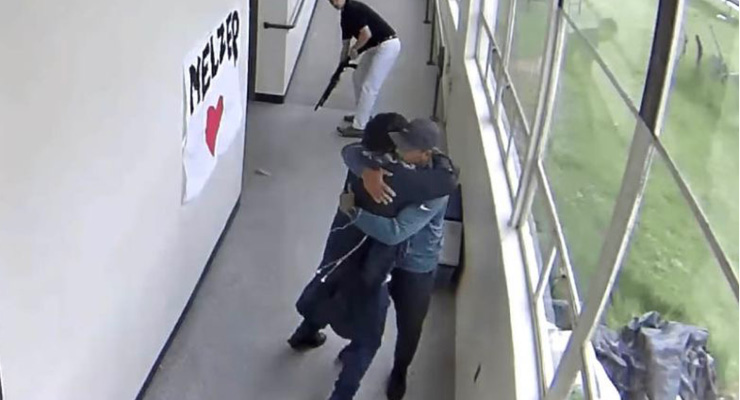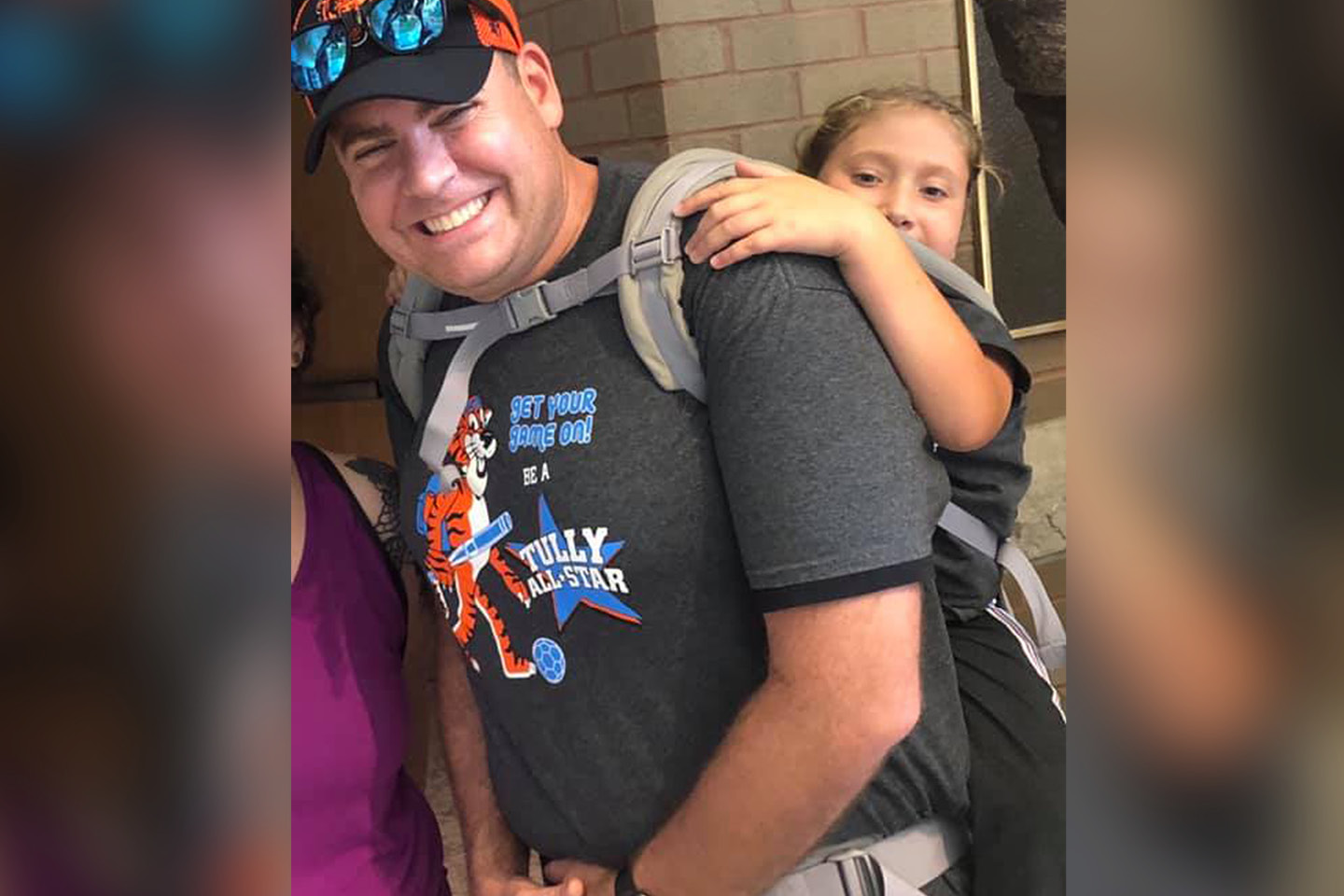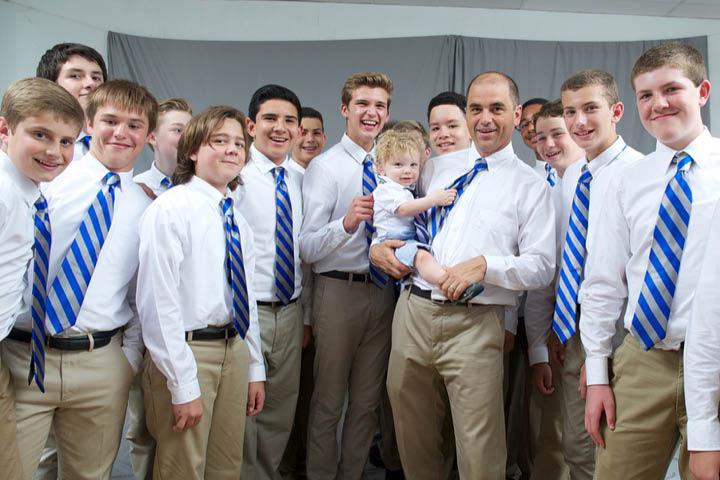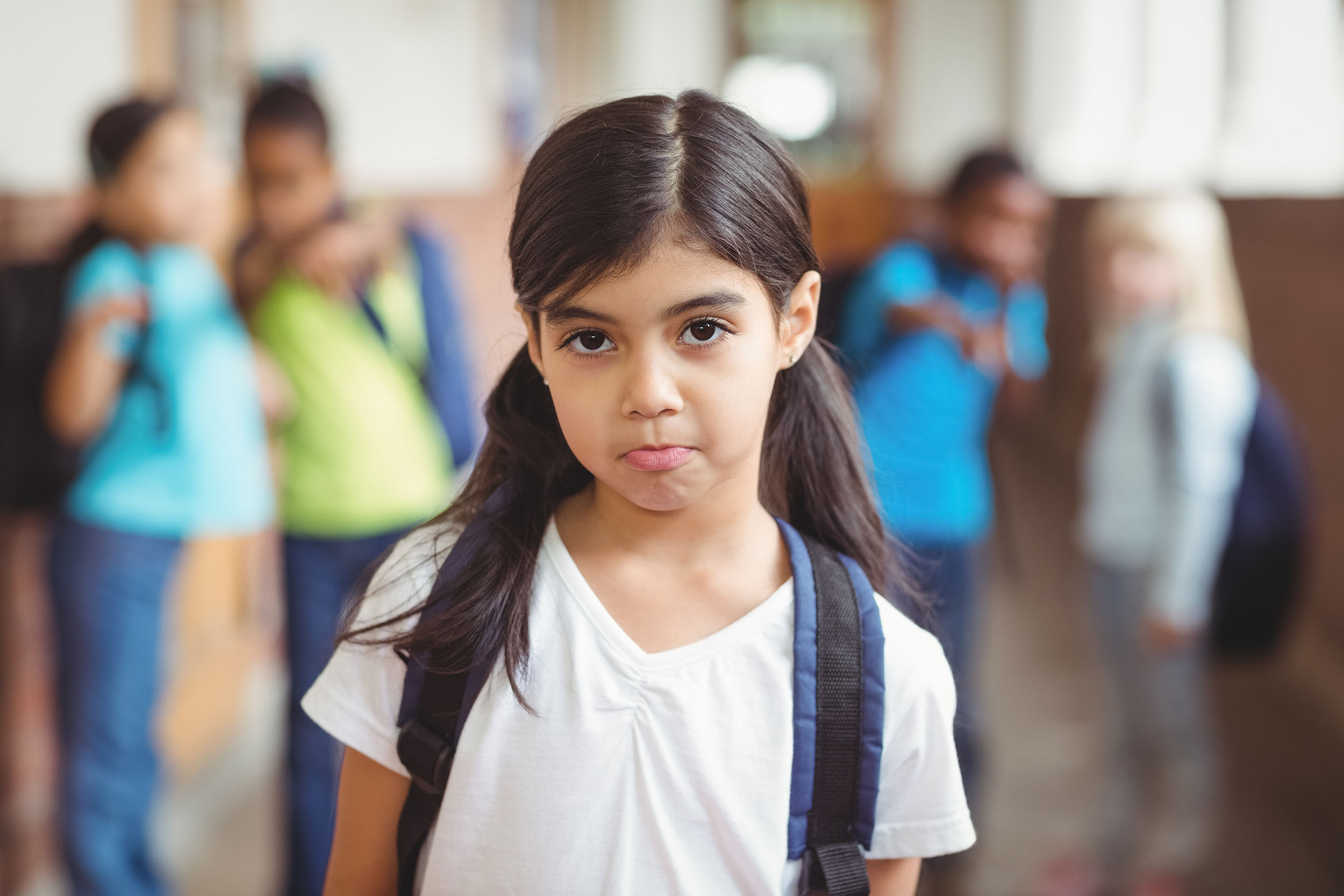To receive a free copy of the chapter of The Content of Their Character that corresponds with this interview, please click here and sign up for our Weekly Digest.
This is a lightly edited transcript of an interview conducted on July 25, 2019, with education researcher Richard Fournier. He contributed the chapter on rural public high schools to The Content of Their Character, a major research project launched by the Institute for Advanced Studies in Culture in order to better understand the moral formation of high school students. The interview was conducted by CultureFeed Editor Joanna Breault.
Joanna Breault: Today I’m speaking with Richard Fournier, who is the managing director of partnerships at Transforming Education. Previously, Richard was a research and technical assistance associate at the Education Development Center, a project scholar for UVA’s Institute for Advanced Studies in Culture, a high school history teacher, a licensed superintendent in Massachusetts, and is currently an adjunct faculty member at Lasell College. Richard is also currently a doctoral candidate at Boston University. Several years ago, the Institute for Advanced Studies in Culture launched a major research project in order to better understand the moral formation of high school students. Researchers went into ten different sectors of schools from public schools, both urban and rural, to private schools, both religious and non-religious, to home schools and others. Richard was one of those researchers, and he and his team focused on rural public schools.
Thank you, first of all, for being with us today. We’re really looking forward to chatting with you. I know that you studied six different schools. I wondered if you could give me a quick overview of what makes a school a “rural school.” What characteristics did those schools that you studied share in common?
Richard Fourier: Sure, and thanks for having me. There are lots of different definitions really of what constitutes a rural school, and in some cases, some schools technically aren’t rural in the eyes of the federal government, but they still claim to be rural and identify as being rural. The definitions that I used are really through the National Center of Education Statistics—NCES—and really it goes, generally speaking, it’s really just the distance from an urban area, and so all of my schools were considered rural. There are some rural schools that are considered “fringe,” which are way out there, and some are “remote,” which are also way out there, and some are more considered “towns,” but in general it’s an area that is usually a certain distance from—pretty far away from—an urban area. It’s usually relatively small. More and more in certain states like in Maine, for example, we’re seeing consolidated districts. So you might have a larger school or high school that’s made up of four or five different rural communities all into now one school. And so, geographically it spans the whole US. So you could be looking at something in the deep woods of Maine. You can be looking at something that’s in the Midwest—completely open fields. And as such, the demographics are varied as well. So sometimes you have, in many areas, a homogenous, all-white student population, but in the other parts of the country, you might have Native American students, you might have students with large English language learner population, African American students, and a number of other areas and race and ethnic backgrounds, and lots of variety with social economic background as well.
JB: Okay. So when you were writing about rural schools, I know you wrote about three different spheres of “moral obligation” that you observed in rural public schools. Can you explain what you mean by that term and describe those three different spheres?
RF: Sure. The three that I had identified were global citizenship, religious responsibility, and military service. And I think what I really kind of intended by that, by talking about moral obligation, was simply that one common thread that I saw in all these rural schools was this sense of—I’m generalizing, but among many of the students and staff—the central obligation for those three areas. In particular, military service was a fairly common thread, whether it was actually going into the military or just simply being explicit about showing support for the military. So a lot of these schools, if not all of them, as soon as you walk in the building you see, obviously, the American flag but also either monuments or some kind of memorial or some kind of artifact that celebrates either staff members or former students who had served in the military or things that are currently going on with the military. I’ve seen in my visits lots of ROTC folks that were in there as well, military recruiters. So the communities are generally very supportive, not shy about showing that support, and many of the families and the students are connected to the military. And so even those that aren’t are usually pretty respectful about that.
Many of these communities tended to either be engaged with different religious affiliations or at least pretty supportive of it—to the extent that sometimes it even crossed the sort of “public school boundary,” where there was talk and discussion about it within the school itself.
And then global citizenship: In many ways that was actually a moral obligation on the part of staff. So a lot of teachers felt like just by nature of being in a rural community, where you’re maybe not as connected with diverse resources—a diverse group of folks that you might find the more urban environment and all the things that come with that—that there was a need among staff to be sure to promote this global citizenship idea, so that students maybe didn’t feel so isolated in those particular areas, if that makes sense.
JB: Yeah, so sort of wanting to expand students’ understanding or exposure beyond their small town?
RF: Yeah, exactly. And the internet’s a really great way to do that, but that also means certain social media literacy and guardrails around that that every school faces. But I think a lot of the staff that I talked to felt like it was especially important in those particular areas, because for some kids, it really was hard for them to reach beyond those boundaries, because they’re not in an urban environment, so they can’t walk out of the school and suddenly see lots of different people from different backgrounds. It’s a lot more homogeneous at many of the schools that I was in.
JB: So what were some of the moral ideals that were embraced by the communities that you studied and which of those do you feel like might be more unique to a rural setting?
RF: I’ll list a couple. I’m not sure how unique they are, but there’s a couple. There’s one in particular that might be. Hard work—working hard. This sense of self-reliance—you know, if you make a mistake, it’s on you and you need to fix it. Service, not just service in the military sense, but service to those who are less fortunate. And that kind of goes along with compassion and care for the community at large. And then just generally respect.
So I don’t want to make a claim that any of these are unique only to rural schools, but I will say that I think that aspect around community is definitely very much emphasized in the rural sector. I think there’s, with many the folks that I talked to, there’s a sentiment, a sense, that—particularly around the communities that were a little lower on the SES (the social economic scale)—the sense of, We might not have a lot around this community in terms of wealth or even, in some cases, resources, but we are a community and we’re going to support each other and make sure that we stick together. So the support is there. And as a result, I think I saw a lot of students, who if there’s a food drive for a certain cause—for a family that lost their house in the fire and then has no money, or maybe one of the students or parents came down with cancer or something like that and needs money for hospital services—the communities really rallied.
And again, that’s not to say that doesn’t happen in urban or suburban neighborhoods, but I saw it as just such a sense of pride for a lot of the rural staff and communities there, and I thought that was pretty interesting.
And then, I think the sense of self-reliance which I think sort of stems from this, very much rooted in the rural, blue-collar lens of life, that even, to some extent, maybe that whole “pull yourself up by the bootstraps” mentality—and it certainly isn’t a bad thing—but I saw that sense with a lot of with a lot of the teachers but mostly a lot of the students and the parents especially.
And sometimes those things were so distinct that I wasn’t sure if certain parents were being serious with me when they were talking about certain beliefs about discipline, for example. So very distinct from some of the other areas throughout the country that I’ve worked with.
JB: What you were saying about school, the community, kind of is a segue into another question I had about this idea of “school as family” and the dynamic of pitching in to help. I know you mentioned if somebody gets cancer and food drives. Are there any other examples that stick out to you of what that looks like, the idea of “school as family”?
RF: Yeah, and I think that this kind of goes along with how teachers and administrators can also create sort of a sense of belonging. Sometimes I think it’s intentional, sometimes I don’t, but the bottom line is that because the communities tend to be relatively small, there is a very clear trend of students who have noted seeing their teachers involved in lots of other aspects of their lives—for example, church. They go to church and they see their teacher or their principal. And because it’s a smaller community, many of the students there go to the same churches or the same church. There might be other outside activities. Also there’s a sort of intergenerational aspect to rural communities where often there are several teachers on staff who themselves attended that particular school. Sometimes administrators too. And so often, you’ll have a teacher who’s been in that community their whole lives and they know their students’ parents and maybe even their parents. So as a result, there’s all this intertwined dynamic and relationships, and so I think for many students and teachers, [it] does, for those reasons, feel like a big sort of family. People know each other; they know their pasts, their reputations. And sometimes that’s a good thing and sometimes it’s not, but I think all those things add up to this feeling that it’s really one big family.
JB: I actually had that question: Does that make it difficult for kids and adults, if they make mistakes, to kind of start afresh?
RF: Yeah, I think so. I grew up in Maine and I grew up a couple streets away from Stephen King, the horror author. And Stephen King—I bring this up because he used to write a lot or has written a lot about the dark sides of growing up in a sort of rural community. And one of the dark sides, I think, is the fact that it’s really tough for you or your family to escape a certain reputation. I mean, part of that’s just human nature, but because it’s a small community it’s hard to, as you said, start with a blank slate. And so I’ve talked to some students that really even in the middle school years that—or early high school years—that certainly felt that. I also think you have a lot of educated adults in these buildings who recognize that and try to usurp that in some way and alleviate the stress that can come with those kinds of reputations. So it’s probably a mix, but I do think you see it there a little more than you might in other schools, because you have so many teachers and administrators who’ve been there their whole lives and whose families they know. So that can make it a little difficult.
JB: Is there a positive bent to that in terms of wanting to make good choices because you and your family are known?
RF: Yeah no, absolutely—I think there’s a lot of positive to it. You know, you might be more willing to go out on the limb and put in extra time with a student because you know their family. You might have more context and sympathy or empathy for what they’re going through, because you know their family. And certainly, yeah, you might have some students that really want to live up to higher expectations because they think their family’s reputation or their reputations are on the line. And so yeah, I shouldn’t have just focused on the negative; I do you think there are a lot of positives for that too. But I think that can be tough for students if it’s the other way around,and they have a reputation for being… if their older brothers were troublemakers, and their father was a troublemaker, or mother, and then they’re coming in as an average student, they might have that following them around.
JB: Are there any other ways that that dynamic of everybody knowing everybody, “community as family,” “school as family” relates to character formation in particular?
RF: Well, I think it strengthens whatever moral ideals or obligations exist. I think it just reinforces them on a regular basis, because it’s a lot harder to deviate from those norms if you can’t find a separate group or subgroup of folks who are supportive of that. So for example, if you’re in the rural community and you happen to be a student that does not fit with the regular norms—and it could really look like lots of different things. Maybe we’re talking about a student who just doesn’t want to engage in many of the common activities, whether it’s sports or outdoors activities or whatever—it might be hard for them to find a particular kind of group to be part of. A student who’s gay or part of the LGBTQ community—it might be tough to find support within that community if there aren’t other folks in that community that are talking about those issues, providing support for those issues. And I don’t think it’s always… it doesn’t necessarily mean that there’s just this common bias or bigotry in those communities, it’s just that there might not be an outlet for that particular student, because maybe that hasn’t been an explicit before.
And so anyway, the point is I think that everybody knowing everybody just reinforces the norms, for better or worse. I think in a good way though, if everybody knows that “hey, when someone is in trouble, you need to put some extra effort in to help them,” you’re probably going to be following that, because everyone around you is doing the same thing—your teachers, your parents your friends. So I think it can work definitely for positive, and then maybe in some cases for negative as well.
JB: So I remember you mentioning in your chapter that it was common for teachers and administrators to kind of reach beyond their teaching duties to support their students. Can you describe some of the ways that they did that?
RF: Yeah, and I’ve seen this happen in urban communities as well. But again, I think that that idea of it feeling like a large family and everyone knowing each other—or many people knowing each other in the community—in my observations, has led to lots of teachers doing a lot of extra things to make sure students had what they needed. So that might have meant that teachers did more home visits to check in with students who might not have had a lot of money, or maybe their parents were dealing with drug addiction. Counselors in the school and teachers checking up on students literally at their homes down the street, whose parents might be addicted to heroin and they haven’t been showing up at school. You know, people in the school making sure that extra food that’s left over at lunchtime is given to students who aren’t going to have anything to eat that night. Doing things like the food drives and just making people generally aware of those kinds of issues that people are dealing with.
So I think in that sense—again, I do see that in the urban schools as well of course—but I think there’s something a little interesting about the rural communities where maybe because they’re a little smaller, it’s a little bit easier for educators to… it’s a little more in front of their faces, because they might know that person’s family from when they were in school. There’s some deeper-rooted connections there maybe. It’d be something interesting to explore.
JB: Yeah, that is interesting. So along the lines of teachers, another thing that you talked about was kind of the willingness that teachers had to engage on controversial topics, although they were often reluctant to weigh in on what they thought was right and wrong. So why do you think that is? Like where does that reluctance come from, and then if they don’t want to weigh in on moral issues, does that mean they’re not part of shaping student character, or are they doing that in a different way?
RF: Yeah, I mean I think this hits at a larger topic about character development and social-emotional learning and all those areas. I think we have a public school system in our country that prides itself on educators staying away from what I think is usually referred to as “moral education;” instead thinking about content, there’ll be critical thinking skills. But when it comes to issues of morality—in politics, frankly—exposingstudents, especially if you’re teaching civics or history or things like that, to some extent, but not having a common moral foundation for what’s right and what’s wrong.
So what happens is either A. Teachers do express these things, but they could be very different from the teacher down the hall, or B. They try to stay neutral. In both cases though, regardless of those teachers’ intentions, the students are always going to be influenced by the actions and the words of those two teachers. So whether you try to be neutral or not, you’re going to be influencing, to some extent, the way in which the student thinks about the world, sees the world, interacts with the world, and whatever social-emotional skills or mindsets that they have. There’s going to be some range of influence that that teacher has on them.
So I think in the communities for this study, what I was actually referring to in that case was the fact that I talked to a lot of teachers who, especially the ones who weren’t from the community, tend to be a little bit more on the liberal range in our political spectrum. And so especially in the social sciences, but sometimes in the sciences, there are certain topics that came up they knew were going to be hot-button topics for those particular communities, especially the communities that tend to be a little more conservative.
So two issues that come up to mind: One, thinking about current political issues and thinking about other cultures, and domestic and foreign international terrorism. I had one teacher that told me, for example, that he had a group of students that basically just would say things like, If someone is Muslim, they’re definitely a terrorist; there’s no question about that. Now those comments probably just come from that kid’s parents. But the teacher I think felt like it was hard to argue. I think he struggled in how to deal with it because on the one hand, he didn’t want to insult the kid’s parents; on the other hand, he wanted to open the student’s eyes to the possibility that that wasn’t true or isn’t true. But he mentioned to me that he also just felt a little bit outnumbered because he has a community of folks in his particular situation that he felt probably would
disagree with him. The other issue is, in the sciences, talking about evolutionary theory and versus you know… I forget the term but I think it’s something design?
JB: Intelligent design.
RF: Intelligent design. And then other topics that might come up or interfere with students’ specific beliefs when they’re in, again, a more religiously oriented, conservative community. But I also spoke to teachers who are really successful in balancing both of those worlds and approaching it in such a way that students could respect, and in some cases agree, with maybe their parents’ or their community’s beliefs, but also wrap their heads around these new concepts that they were learning in school. But I think all these things are, you know, a little bit difficult for teachers to grapple with at times. Some teachers just didn’t care and were saying, No, I’m going to teach it this way and you know, students can make their own conclusions but I’m not going to avoid these topics because I think that could get some complaints. And other teachers try to play a little more safer.
JB: Do the teachers who are from the communities tend to play it safer? Or is there no correlation?
RF: Just anecdotally, just from my own observations, usually in in a particular community that happened to be more conservative, usually the teachers who had been there are also in alignment with that philosophy. And then there were a couple towns where clearly there were still some very deep-rooted issues around race and racial justice. I mean, they came up a lot. And I wasn’t exploring that aspect too much so I didn’t go into a lot of detail in it, but it was clear to me that while in a place like Cambridge, Massachusetts, you might go into a school where they’re talking about how race might play out in the classroom or various dynamics, in some of these towns, we were still having conversations about lynchings that took place in the early nineteen hundreds; I mean, these are deep-rooted topics that people were sort of aware of, that may or may not be discussed. It was definitely another area that I’d like to explore more if I had the time.
JB: Well, we kind of touched on this a little bit but just one thing that kind of stood out to me as I read your chapter, over and over again, was the importance of athletics in school community, kind of the connection between school and the community beyond the school—that connection a lot of times is forged through athletics. So what does that mean for kids who aren’t athletic or maybe aren’t even interested in sports? Did you observe anything along those lines?
RF: Yeah, I actually expected that, just from pop-culture, stereotypes, movies, I thought that you’re going to find a bunch of students that weren’t involved in sports being like shunned or outcasts. But I really didn’t find that at all. I mean, students actually, these days, with the advent of the internet and all the connections they have in social media, found plenty of other… lots of kids were involved in gaming and have their own little clubs there. Some kids were involved in, maybe not like generic sports, but outdoors-type activities like hunting or fishing or camping or hiking or whatever that they could they could do outside of that. Some students—a lot of students actually—have vocations they were obsessed with, or passionate about I should say, before even graduating. So some kids would go to school and right after that go and do their job as a mechanic, for example. So I mean, I think they could still have that school spirit and that pride without necessarily being involved in sports. I say that, but I also do think like many schools, sports tend to lend itself, athletics can lend itself, to being more seen as popular in the eyes of teachers, administrators, and the community at large. And some of that sentiment definitely still existed with the students, and I think you’d find that in the urban schools as well.
JB: Right. Well this has bene really interesting. Is there anything else that you can think of that you think would be important for the wider community to know about rural schools as we wrap up? Anything else that came to mind?
RF: I think just if anyone is listening to this who hasn’t been in a rural school before, I think just acknowledging that there’s over 12 million students in the US who are attending rural schools. It’s just important to know that that’s occurring and that we need to think more about these students when we think about education policy, which I think tends to be weighing itself more heavily in favor of what’s going on in urban schools. And then secondly that rural schools are having a lot of success in many areas, but they also have unique struggles that we don’t see in urban areas, and so when we think about those education policies, we need to consider that they’re not always the same issues. They might have an issue with teacher retention or teacher hiring but for different reasons than in urban districts. I guess I’d leave with that.
JB: Thank you for your time today. I really appreciate it.
RF: Thank you.
JB: All right. Bye.










